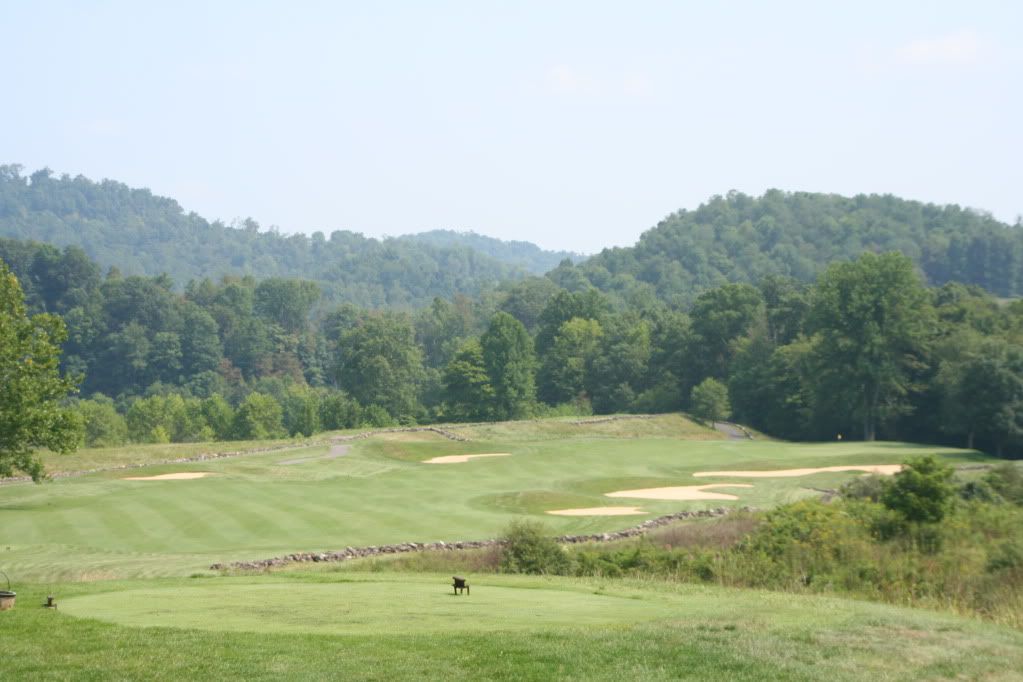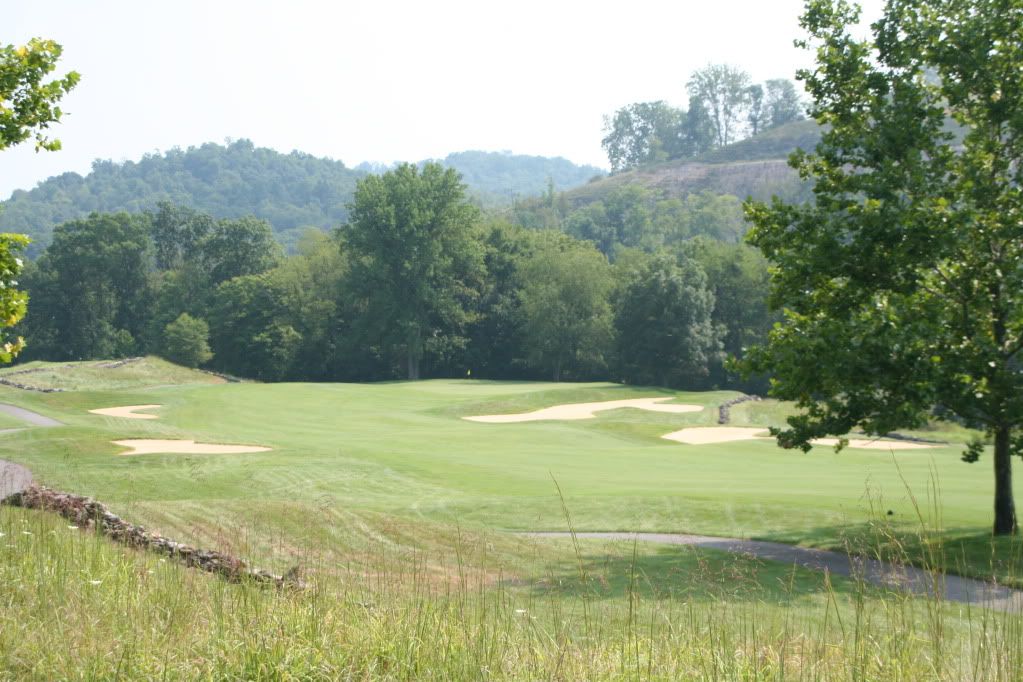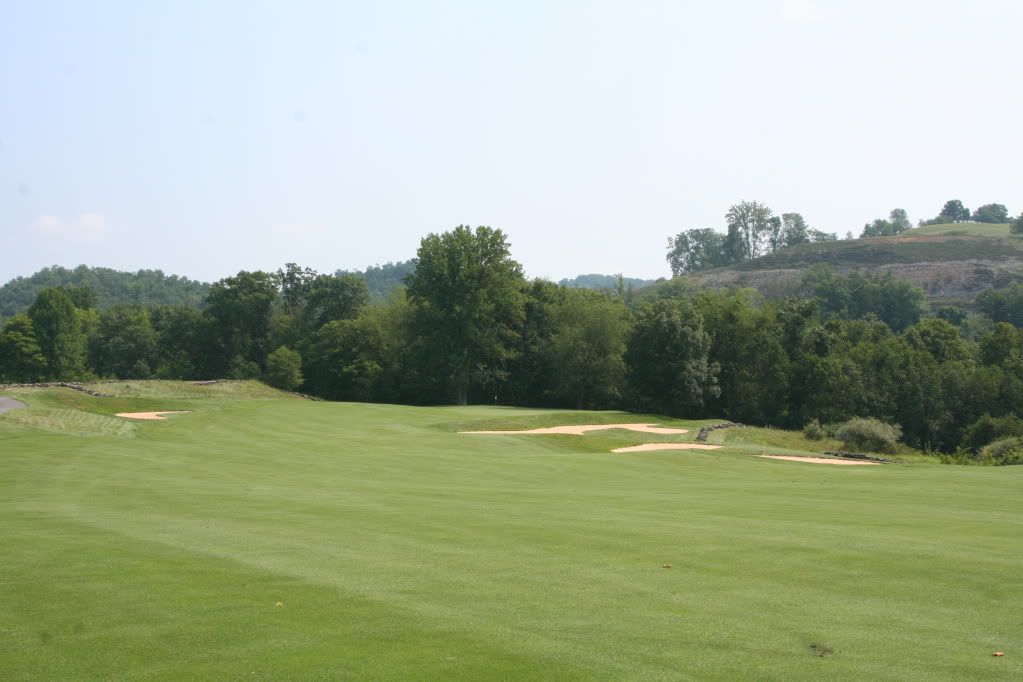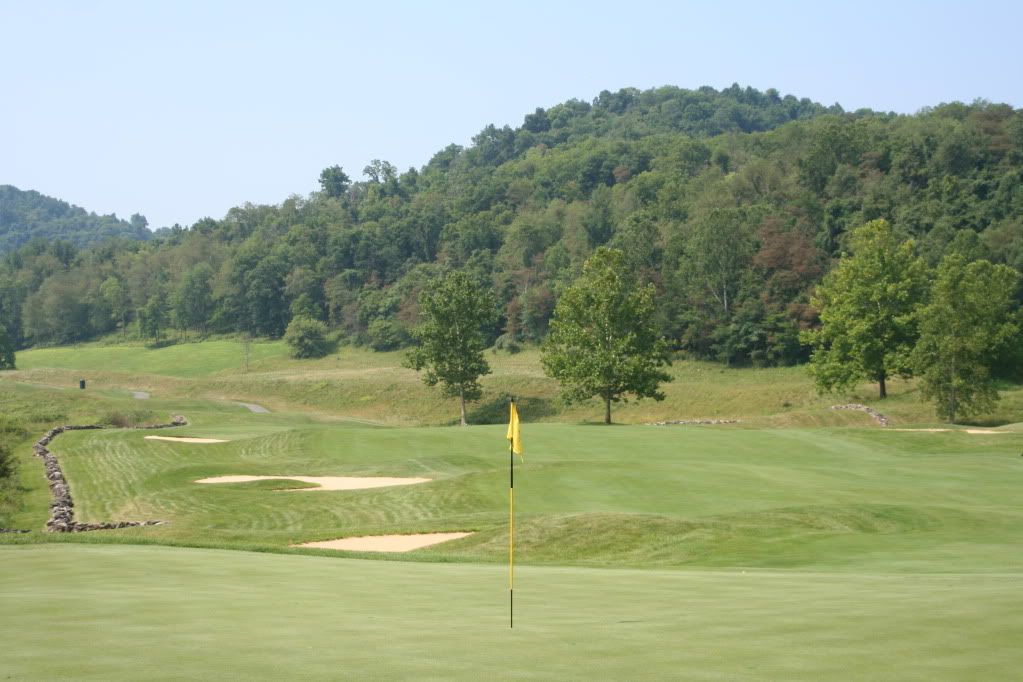#14. Another very meaty par 4 (unless you don't feel like it).
When I played this hole, I was using the second to last deck (around 450), and was very happy to card a GIR with a long iron. I just liked the overall feel of the hole, whether it was the wide open vista or the charm of the stone wall framing.
Until I started analyzing this hole, I didn't really appreciate the point of most of the bunkering. Then I looked at the yardage guide and aerial again:


There are 7(!!) Tee Decks on this hole with ~190 yards of separation, which makes this one of the most flexible holes on the course.
From the back three decks, the tee shot plays somewhat similarly to #10 and #11, in that you really have no business looking at the inside of the dogleg (carries of 312/268/258). Again, resist the Line of Instinct and look towards the far left fairway bunker, as it's not in range (it's 280 yards even from the 4th longest set of tees). Thus, my initial impression was that all the additional sand really didn't have much of a purpose (except some deception).
But when you start moving up several decks, you can start seeing some of the fun risk/reward carries and diagonal landing areas provided by the second set of bunkers. Even for good players, you could move the tees up 100+ yards and still provide a fun challenge.
A few views from the tee. The solitary left tree may scare you a little, but I think you want to flirt with that a little more than the sand inside the dogleg.


Long view from near the 12th green shows the left side view. Neat to see the pastoral vista of the hole with the coal-mined rock walls in the far background:

From the left side of the fairway:

Closer to center:

From the right side:

A few looks back at the hole:



*******************
Overall, I can't really put my finger on why I liked this hole as much as I did. Relative to some of the other surfaces, the green and surrounds were fairly benign. Perhaps it was just the change of pace, as there was nothing hidden at all from the tee. I'd be interested to hear the impressions from others.
A few questions:
- Does the club ever avail itself of the upper tees for club events? Is it played as a monstrous four on one day and then converted to a short 4 the next? The 7th tee looks like it would make a ~285 yard par 4. Or are these decks solely left for the higher handicappers / beginners?
- When playing at it's full length, is there much 'feeder" slope in the area short and left of the green? It looks like there's a slight tilt, but curious how much run-up players can get from their fairway wood approaches.
- Is there something very subtle I may be missing about the green? I don't recall much about it.